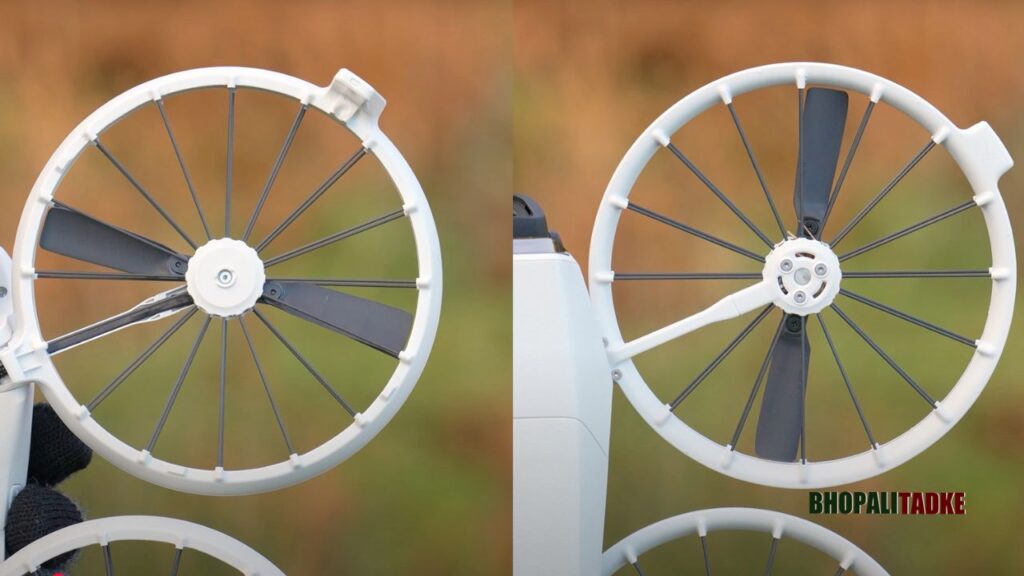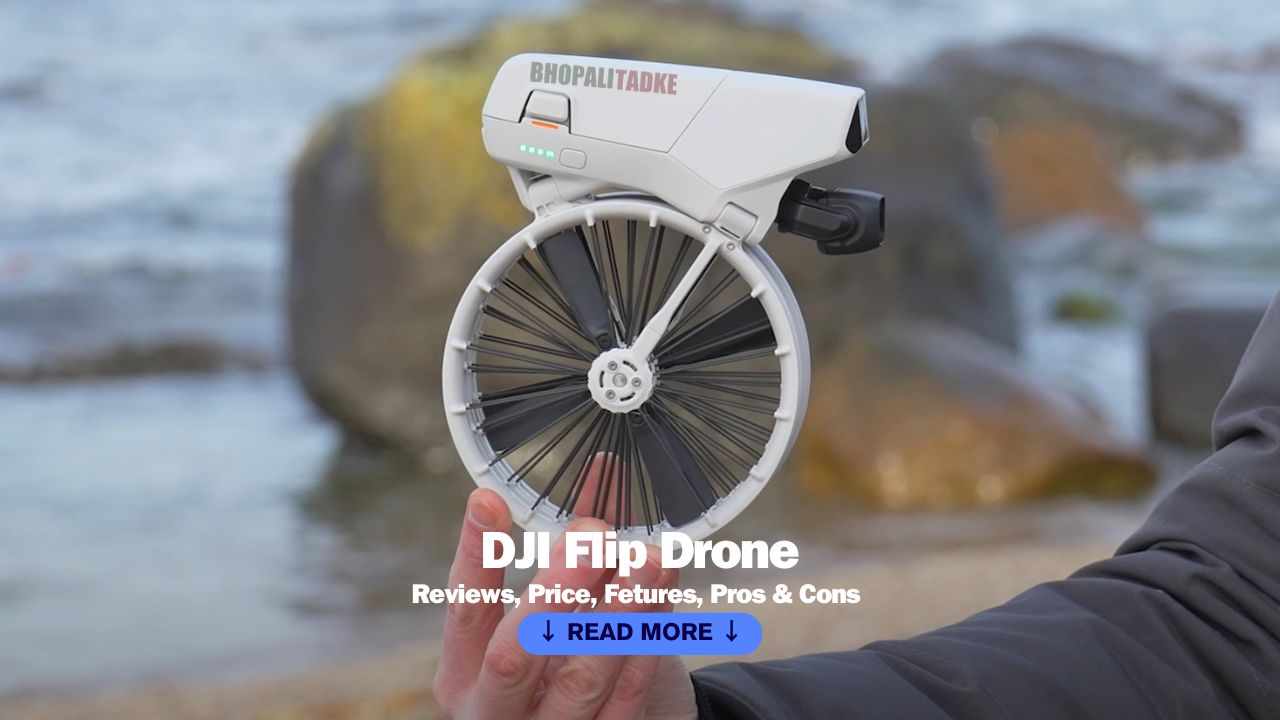Hey everyone! Today, I’m excited to give you your first look at the new DJI Flip drone. DJI says it’s designed for all scenarios, whether you’re capturing stunning aerial footage or close-up tracking shots of people. This drone promises to do it all, while still being beginner-friendly. After flying it for a few weeks, I’m here to share 11 things you need to know about this new drone, including what I love and what could be improved.
1. Design and Portability
The most visually striking feature of the DJI Flip is its design. It’s a departure from the traditional DJI drone look and is small enough to fit into a camera bag, roughly the same size as the DJI Neo. However, if you’re someone who likes to carry it in a pocket for tracking shots while running or cycling, you’ll find it too large for that.
When I first heard “Flip,” I thought it referred to a drone that could do flips, but that’s not the case. Instead, the name comes from how the arms holding the propellers flip outward when the drone is ready for use. As you unfold the arms, the drone powers on automatically, though you can also turn it on manually with a side power button.
2. Unique Propellers and Safety Features

The Flip features large, unique propellers with a long and narrow design, each with only two blades. It also comes with built-in propeller guards that fully enclose the blades, protecting them from damage if they hit an obstacle. These guards also protect people and objects around the drone. However, a downside is that these guards are built into the frame, so if they’re damaged, the entire drone will need repairs, which could be costly.
3. Battery Life and Flight Time
The DJI Flip uses easily insertable batteries, providing a claimed flight time of 31 minutes. In my testing, however, I averaged around 22 to 24 minutes of actual flying time, depending on wind speed and the drone’s movement.
4. Autonomous Flight Modes
At the front of the Flip is a black panel housing a mode indicator and a 3D infrared (INF) sensing system for obstacle avoidance. Like the DJI Neo, the Flip can fly autonomously without a controller. It offers six intelligent flight modes, including Follow, Circle, Rocket, Spotlight, and a Custom mode that lets you set your preferences via the DJI Fly app.
One impressive feature is the “Follow” mode. Simply hold the drone out in front of you, press the mode button, and after a countdown, the drone will automatically take off and follow you. The tracking works well, but if you make sharp turns or walk behind obstacles, the drone may briefly lose track of you. It can regain tracking once you’re back in its sight.
5. Obstacle Avoidance System
The DJI Flip is equipped with forward-facing infrared sensors for obstacle avoidance. While this system works well in detecting large obstacles and performs better in low light, it can struggle with smaller objects or unexpected situations. During my testing, I encountered instances where the drone would continue moving even after detecting an obstacle, eventually crashing into it. The system can also occasionally generate false obstacle warnings.
6. Smartphone and Controller Compatibility
Like the DJI Neo, the Flip can be flown using only your smartphone through the DJI Fly app, which is great for casual flying and tracking shots. However, the connection range is limited to around 10 meters, with connectivity issues often occurring beyond that.
For better control and a more reliable connection, the Flip can also be paired with the DJI RC-N3 or DJI RC2 controllers. These offer a much longer transmission range, up to the legal limit, and the connection remains stable even in obstructed areas like forests.
Unfortunately, the DJI Flip isn’t compatible with the DJI goggles or FPV controllers, meaning it can’t be flown FPV (First-Person View).
7. Image Quality
One of the standout features of the DJI Flip is its camera. It comes equipped with a 1/1.3-inch sensor and an f/1.7 lens, the same as the Mini 4 Pro. The footage is sharp, bright, and clear, even in low light. You can record 4K 60 FPS HDR video or capture slow-motion footage at 4K 100 FPS.

However, there are some inconsistencies between flying with a smartphone and a controller. When using a smartphone, 4K is capped at 30 FPS, and slow motion is unavailable. But with a controller, you can record in 60 FPS and access slow-motion features.
8. Wind Resistance and Stability
The DJI Flip’s wind resistance is one of its weakest points. Although it has a reported max wind resistance of 10.7 m/s (level 5), it doesn’t perform nearly as well as the Mini 4 Pro in strong winds. While the Mini 4 Pro remains stable, the Flip struggles to maintain control and is more prone to being blown off course, especially at higher altitudes.
At higher altitudes and windy conditions, expect shaky footage due to the drone fighting against the wind. For smooth footage in such conditions, the Mini 4 Pro is the better option.
9. Tracking and Control Inconsistencies
There are a few annoyances with the DJI Flip’s tracking. When it follows you, it tends to fly very close, often cutting off parts of your body like your feet or legs. This can be adjusted when using the controller, but the point of the Flip is that you don’t need a controller to get started.
Additionally, there are some inconsistencies in the available features depending on whether you’re using the drone with a smartphone or controller. For instance, the smartphone app doesn’t allow manual exposure adjustments or control over settings like sharpness and noise reduction, which you can do with the controller.
10. Unique Features and Customization
The DJI Flip has several cool features that enhance its usability, including the ability to record audio via your smartphone’s microphone or an external DJI mic. It also supports parallel charging, allowing you to charge two batteries at once in approximately 70 minutes.
The Flip includes intelligent recording modes like quick shots, master shots, and hyperlapses, but note that hyperlapses are limited to 1080p resolution. Another unique feature is voice command control through the DJI Fly app, enabling hands-free control for various actions like changing modes or landing.
11. DJI Flip drone Price
- DJI Flip (DJI RC-N3) for USD $439, with the standard RC-N3 controller and smartphone compatibility for live feed and flight status.
- DJI Flip (DJI RC 2) for USD $639, which includes the DJI RC 2 remote with a 5.5-inch 1080p, 700-nit screen for better visibility.
- DJI Flip Fly More Combo (DJI RC 2) for USD $779, offering the DJI RC 2 and extra accessories for a complete package.
Choose the right version based on your needs!
Conclusion
the DJI Flip is a compact, versatile drone with great features for both beginners and pros. It offers impressive camera quality and intelligent flight modes but has some limitations like wind resistance and obstacle avoidance. While it’s a solid choice for everyday filming, it might not be ideal for those seeking advanced features.

